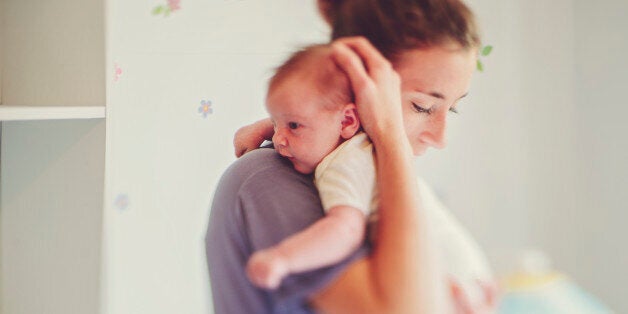
It's as predictable as the terrible twos: Any time groups try to pass a progressive workplace policy, opponents warn of the unintended consequences to jobs and businesses. That has certainly been the case with proposals to establish a family and medical leave insurance fund.
The facts say otherwise: A growing body of evidence shows that such a policy does not unintentionally harm businesses or jobs or profitability or the economy. But the Chicken Little crowd shouldn't be the ones who define the terms of this debate. It's time to turn the spotlight on the intended consequences of such a program and how they align with key priorities of our nation.
Take infant mortality. Surely as the richest nation and one that spends the most on health care, America should have the lowest infant mortality rate in the world. Instead, a baby born in the United States is more likely to die before its first birthday than one born in Poland or Slovakia. According to the Centers for Disease Control, we're at the bottom of the list of wealthy countries in this category.
The bottom of the list. Just as we are when it comes to guaranteeing paid leave.
But paid parental leave makes a difference. Research on European leave policies found paid leave is a relatively cost-effective way to reduce infant mortality. Mothers can better afford the time for pre-natal care; parents can look after their infants and make sure they get needed well-baby visits. Paid leave also helps increase rates of breastfeeding which lowers rates of infant illness and saves billions in hospitalization costs.
How about maternal mortality? While many countries have seen a decline, the rate in the U.S. has doubled. And according to the CDC, African-American women are more than three times as likely to die as a result of pregnancy and childbirth than white women in the United States. It can't help that nearly one in four pregnant employees in this country may return to the job within two weeks of delivery.
That rate is not just alarming -- it's shameful. Affordable time for pre-natal care and rest for high-risk pregnancies can help save mothers' lives.
Let's not forget the dads. We say we want men to be responsible fathers. Family and medical leave insurance increases men's role in caregiving by making it possible for them to be involved without the family taking a big financial hit. In Rhode Island's first year offering paid family leave, for example, dads accounted for approximately one-third of all parental leave takers, much higher than the national average. The evidence is even more striking in Iceland, where men and women each get three months paid leave and can share another three months. There, 90 percent of fathers of newborns take leave -- and three years later, 70 percent of those couples share child care responsibilities.
Dads sharing caregiving will give a boost to women's equality -- and so will higher workforce attachment and pay for women as a result of paid leave. Women who take paid leave after a child's birth are more likely to be employed the following year and to report increased wages than women who do not take leave. Met Life conservatively estimates that unpaid caregiving costs women more than $300,000 over a lifetime.
And then there is taxpayer's benefit as well. Parents who took leave report lower levels of public assistance in the year following their child's birth.
A growing number of companies have recently expanded their paid leave policies. All of them cite a business case for doing so. As YouTube CEO Susan Woycicki noted, after Google (parent company of YouTube) increased paid maternity leave from 12 weeks to 18 in 2007,
the rate at which new moms left Google fell by 50 percent... [I]t's much better for Google's bottom line -- to avoid costly turnover, and to retain the valued expertise, skills and perspective of our employees who are mothers.
The list of benefits goes on: Reduction in racial and gender health disparities and income rates; stronger early childhood development; more people able to take the time they need to heal; more seniors able to live with dignity and independence; businesses benefiting from customers with more income to spend. Rhode Island paid leave users report lower stress, better overall physical health, and higher job satisfaction.
As a nation, we hold strong families among our highest values. Yet for millions of Americans, being a good parent to their children or good children to their parents too often leads to financial disaster. A family and medical leave insurance program will go a long way toward changing that.
